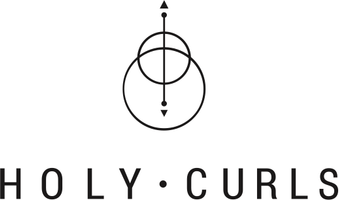Protein vs. moisture: which one does curly hair need?
Ever woken up with a head of hair that just doesn’t look like your own? Maybe your curls are looking limp, lifeless and lacking elasticity or the texture feels dry and brittle… Something’s not right, but what’s going on?! Babe, you might have a protein-moisture imbalance on your hands.
Your hair strands are made up of around 90% of fibrous proteins like keratin, which form the centre of the hair cortex and give your hair its elasticity. Protein also gives your curls strength, shape and structure, so without it they’ll soon be looking weak, limp and lacking definition. You can add protein to your hair by eating more of it or using a protein hair treatment to reinforce the strength of your strands.
But when it comes to protein, it’s also possible to have too much of a good thing. Also known as protein overload, too much protein and not enough moisture can leave your hair feeling stiff, dry and brittle (read: easily breakable). So how do you know if your hair needs protein or moisture? Keep reading to find out the optimal balance for boss babe curls.
Why protein and moisture is important for curly hair
All hair needs both protein and moisture to stay healthy and strong. In fact, protein and moisture can’t work well without the other. You need a strong protein structure in order for water molecules to bind with your strands and to keep the water locked inside.
For curly and textured hair, you’ll know by now that moisture is key to keeping it healthy. This means you’ll need to make sure your curls are also getting enough protein for your hair to hold onto all that moisture. But you also have to remember that kinky, coily and textured hair is more susceptible to breakage than other hair types. This is due to the fine hair follicles, which need a bit of reinforcing and strengthening to prevent breakage.
How do you know if your hair needs protein or moisture?
When your hair has the right level of hydration, nutrients and strength to prevent breakage and split ends, that’s when you know you’ve got the optimal protein-moisture balance. Finding that balance is not so simple – it depends on your curl type, hair porosity and styling routine. But once you get to know your hair and its needs, you’ll be able to tell when to add or cut back on moisture and protein.
A simple test you can do to see if your hair is lacking in protein or moisture is by stretching a strand of your hair down towards the ground and seeing how far it extends before breaking.
Balanced hair: the strand stretches a little then bounces back to its original length without breaking.
Too much protein and not enough moisture: the strand stretches more than usual then breaks, feels dry, stiff and brittle.
Too much moisture and not enough protein: the strand keeps stretching without breaking, feels weak, mushy and limp.
If in doubt, remember that curly and textured hair tends to be on the drier side, so using moisture-boosting products is always a good idea. A good rule of thumb is to make sure your curls get twice as many moisturising treatments as protein. If your hair is damaged from too much styling, you’ll need to up the protein and conditioning at the same time.
What happens if your hair has too much protein?
Keratin strengthens the bonds between the molecules in your hair strands, which is why a lot of protein treatments use it to coat your strands. But you need to use these treatments in moderation.
Overuse can lead to a build up of protein on your hair cuticle, which can weaken the hair shaft as it makes your hair heavier. This can lead to split ends and brittle, breakage-prone hair – exactly the reason why you wanted to use protein in the first place, to strengthen your strands against breakage. See why it’s a tricky balance to strike?
If you think your hair has too much protein, try cutting back on or removing any products that contain protein and add in extra moisture-boosting products. If after a few weeks your hair feels softer and looks healthier, then you’ve probably just recovered from protein overload. You could also try using a clarifying shampoo to clear away any protein product buildup.
How can you add protein to your hair routine?
To make sure you’re getting enough protein without the risk of overloading, use products with light protein more regularly to reinforce the strength of your strands (once a week or less). If your hair is seriously damaged, you’ll need to use a deeper protein treatment to repair and restore your curls. Always remember to follow up intense protein products with a deep conditioner to boost moisture and prevent your hair from becoming brittle.
Look for products that use words like repairing, restoring, strengthening or rebuilding – these are the products that will contain some protein. Ingredients to look out for include oats, wheat, rice, keratin, soy and milk. Our conditioner contains a blend of hydrolyzed corn, soy and wheat proteins that mimic the amino acids in the hair, reinforcing the strength of the strand. It also has a moisture-boosting formula made with nutrient-rich and conditioning baobab oil and dreamy cupuaçu butter – one of nature’s most powerful moisturisers.
We're All About The Results
Show us yours!
We LOVE to see the results from your new curls care routine. Tag us in IG @holycurls for a chance to get featured







